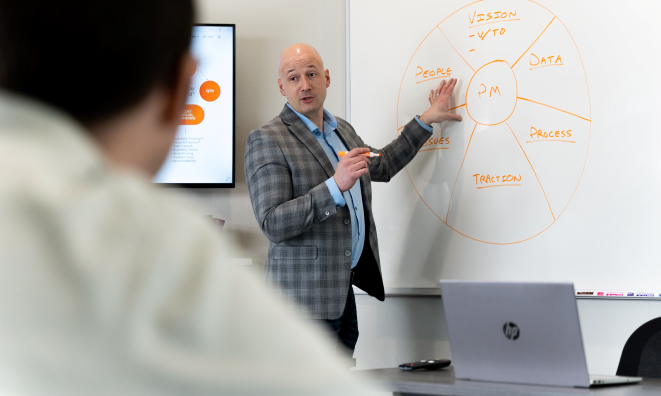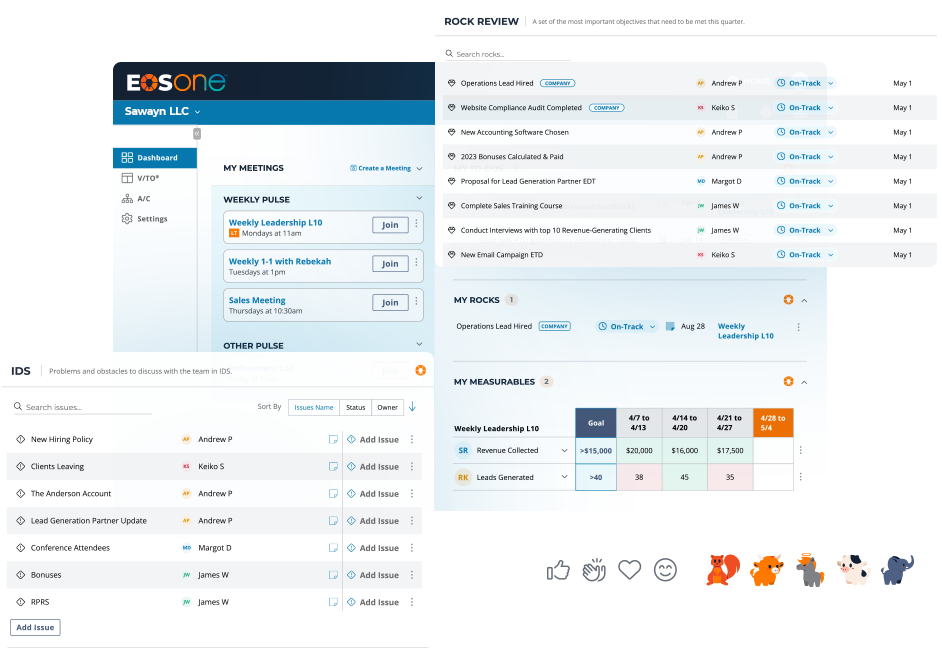
You’ve been there in business multiple times. You have a glaring issue of some kind that is holding you back and that your team and organization avoids. Maybe it’s a people issue you’ve had forever. It might be a process that is lacking where you don’t believe you have the time to slow down and clarify and document it. Whether it’s a monstrosity of an issue or one that is inconvenient or awkward to solve, you end up sweeping it under the rug, avoiding it as long as possible or kicking it down the road. Only then does it come back to rear its ugly head even worse than before. Eventually, you get to the point of no return where the pain caused by the issue is so great you are forced to deal with it…And as you know, once you get to that point, it’s never fun, convenient or quick to solve.
One of the biggest roadblocks for organizational leadership teams is effectively solving issues and making them go away for the long term greater-good of the organization. Why? Because it’s hard. It can be expensive. It takes time. It makes your company slow down for a hot minute. And none of those options are fun or easy fixes. As a Certified EOS Implementer®, one of the tools I bring in through the EOS process and journey to help teams solve issues once and for all is called the Issues Solving Track™.
The Issues Solving Track is a very defined tool and process that helps team prioritize and effectively solve their issues through 3 steps: Identifying, Discussing and Solving. Within that framework, you look to identify issues as falling within one of Six Key Components. Those Six Key Components consist of Vision, People, Data, Traction, Issues, Process and Traction.
It’s within these Six Key Components that the magic of solving issues happens. And it’s through asking questions, which are merely directions to the truth, that you find the answers. So, how can you begin to navigate through the Six Key Components more effectively through asking questions to identify core issues more quickly so that you may solve them faster and more productively?
Below are questions that lie within the Six Key Components that your team can begin to ask of themselves, as well as individuals among the team, once an issue has been teed up. Your answers to the questions will help you navigate to the core issue at hand, and ultimately, the tools that will help your group find the solution or next step for that issue.
Vision
- Has the vision or concept been clearly communicated?
- Is everyone or the associated party sharing the same vision?
- Is there more clarity or buy-in needed around the vision?
People
- Is this person truly a values and culture fit for our organization?
- Do we have the right seat and responsibilities identified?
- Does our structure support the roles and responsibilities?
- Is this person effectively performing the designated responsibilities?
- Does the person GWC (Get It, Want It and Capacity For) the responsibilities?
Data
- Are we tracking the correct data to help drive decisions?
- Is our data proactive and helping us see into the future?
- Do we have too much or too little data to make the best decision and solve this?
- Do we have measurables established?
Issues
- Do we have openness, honesty and transparency around the issue?
- Are we effectively identifying and solving the most important issues first?
- Are we properly identifying core issues vs symptoms or those core issues?
Process
- Is a clear, concise and effective process documented?
- Is there more clarity or detail needed around the process?
- Is the process actually being followed?
Traction
- Do we have focus placed on the issue with a Rock, To Do, etc.?
- Are we executing the vision?
- Is there an effective meeting pulse to support productive communication and focus?
- Are we tracking accountability and progress around the issue?
Solving issues is definitely a skill and takes time to improve upon. At first, by asking questions you may find yourself pinballing around the components as you attempt to properly identify that core issue. This is perfectly OK, and once you learn, as individuals and as a group, to challenge each other and ask the right questions to dig into issues quickly and concisely, you’ll more effectively be able to identify the core issue at hand and work to take next steps in solving it.


